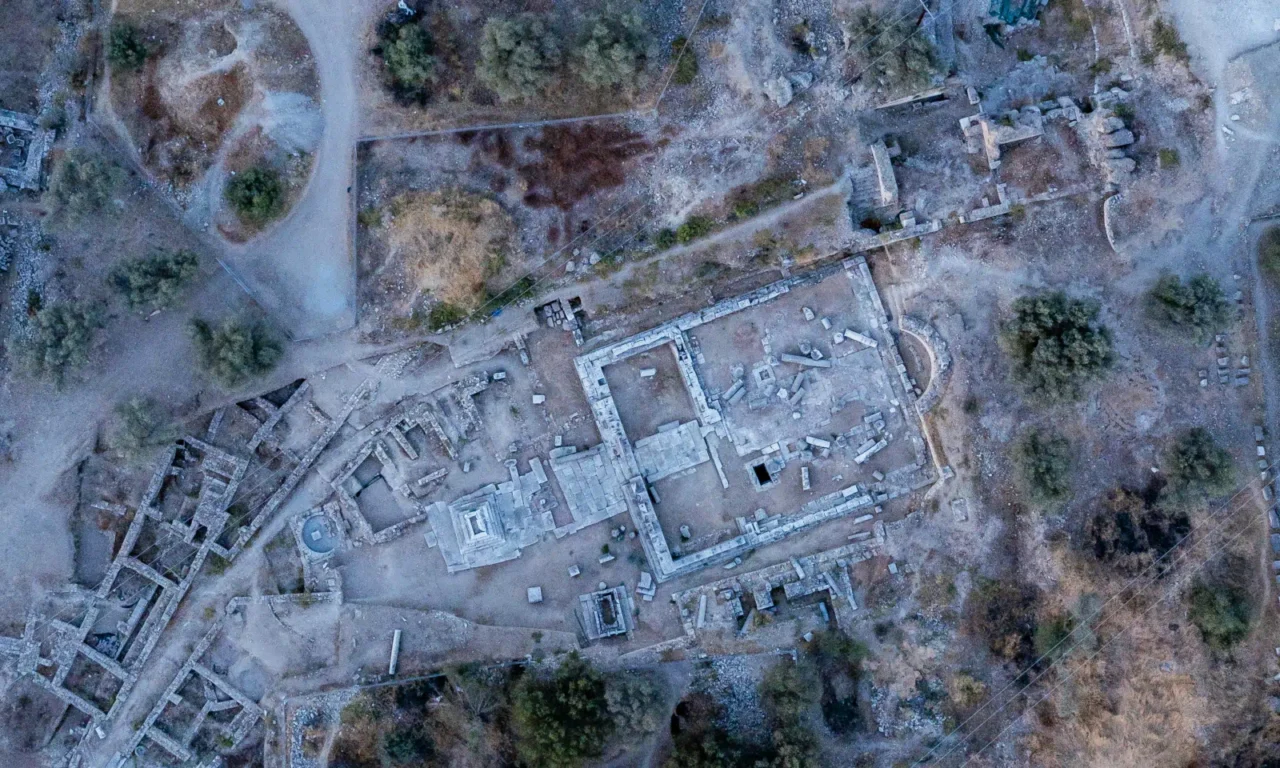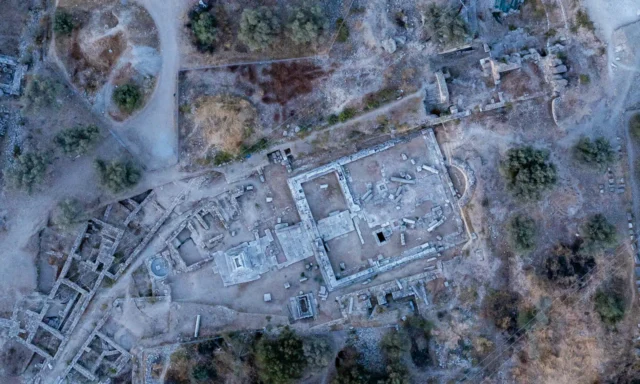

A Sanctuary’s Enduring Legacy
The Temple of Apollo Pythios, situated on the plain east of Gortyna’s city center, stands as a testament to the city’s enduring religious and cultural significance. The sanctuary’s history spans centuries, from its Archaic origins to its decline in Late Antiquity, reflecting the evolving religious landscape of Gortyna and its place within the broader Mediterranean world.
Archaic Origins and Hellenistic Expansion
The earliest evidence of the sanctuary dates back to the 7th century BC, during the Archaic period. The original temple, likely a modest structure, served as a focal point for the worship of Apollo Pythios, a deity associated with prophecy, healing, and music.
In the Hellenistic period (c. 323-31 BC), the sanctuary underwent significant expansion and renovation. A closed vestibule with a decorated facade was added to the temple, enhancing its grandeur and reflecting the growing importance of the cult of Apollo in Gortyna. The sanctuary’s location on the plain, away from the Acropolis and the Agora, suggests its role as a destination for pilgrims and visitors from outside the city.
Roman-Era Flourishing
The Roman conquest of Crete in 67 BC ushered in a new era for Gortyna and its sanctuary of Apollo Pythios. The city’s elevation to the capital of the province of Crete and Cyrenaica brought increased prosperity and cultural exchange, further enhancing the sanctuary’s prominence.
During the Roman period, the sanctuary continued to be a vibrant center of religious activity. The temple complex was further expanded and embellished, with the addition of new structures and decorative elements. The sanctuary also served as a venue for public events and festivals, reinforcing its role as a focal point of community life.
Late Antique Transformations and Decline
The decline of the Roman Empire and the rise of Christianity in the 4th century AD marked a turning point for the sanctuary of Apollo Pythios. The temple complex fell into disuse, and its structures were gradually repurposed or abandoned. The once-vibrant sanctuary became a shadow of its former self, reflecting the changing religious landscape of Gortyna and the wider Mediterranean world.
In the late 4th century, the temple underwent a final transformation, with the addition of a terminating apse and the replacement of its original columns with spolia from other buildings. This renovation, however, did not revive the sanctuary’s religious function. By the 5th century AD, the temple complex was largely abandoned, its structures slowly succumbing to the ravages of time.
The Sanctuary and the City
The sanctuary of Apollo Pythios, located on the outskirts of Gortyna, played a multifaceted role in the city’s life and development. It served as a religious center, a venue for public events, and a symbol of Gortyna’s cultural identity. The sanctuary’s location on the plain, away from the city center, also suggests its function as a place of pilgrimage and a point of contact with the wider world.
The sanctuary’s evolution reflects the broader historical and cultural transformations that Gortyna experienced throughout its history. From its Archaic origins to its decline in Late Antiquity, the sanctuary of Apollo Pythios witnessed the rise and fall of empires, the ebb and flow of religious beliefs, and the enduring human quest for spiritual connection.
Archaeological Site: Key Points
- Construction Period: 7th century BC to 4th century AD, with major renovations and expansions in the Hellenistic and Roman periods
- Location: On the plain, east of the ancient city of Gortyna, Crete, Greece
- Dimensions: The sanctuary complex occupied a significant area, including the temple, a vestibule, and surrounding structures
- Historical Significance: Served as a major religious center dedicated to Apollo Pythios, reflecting Gortyna’s cultural and spiritual life
- Current Status: The ruins of the temple and other structures within the sanctuary complex are preserved at the archaeological site of Gortyna.
Unfortunately it cannot be visited as excavations are still taking place.
But it's also worth visiting this place from the fence.
Definitely worth it if you visit the archaeological zone in Gortyn!
Nothing organized.
I only took some photos with the unique trees surrounding the area.
Site Info
Access
The site is fenced by you can walk by.








































There are no comments yet.